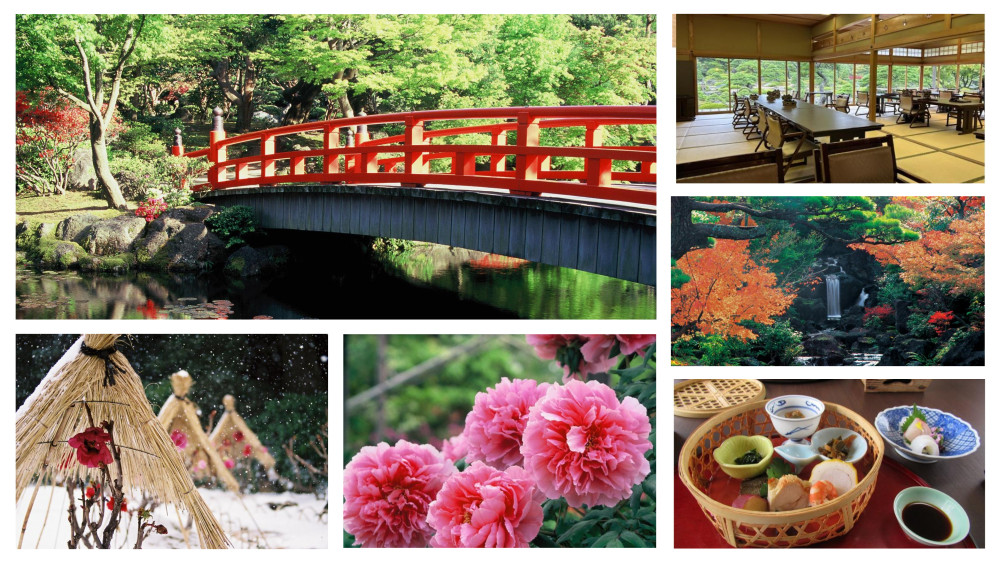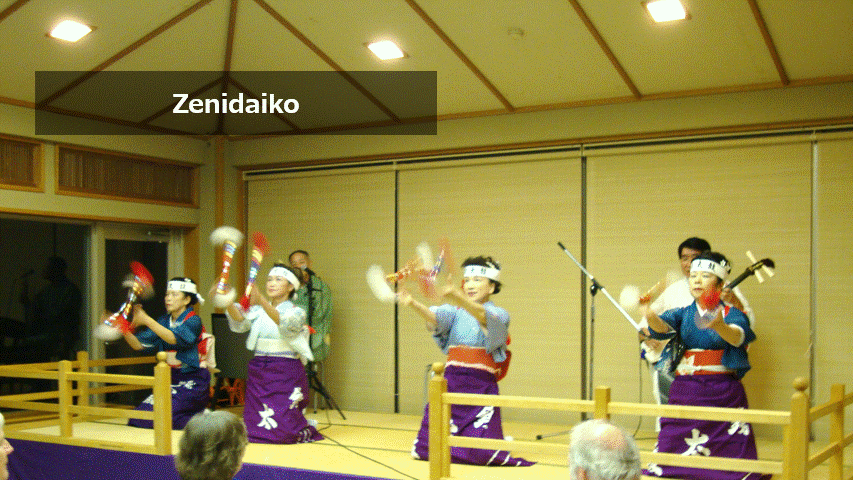
Banquet
Information
| Date & Time | Oct. 7 (Tue) 18:00 - 20:30 |
|---|---|
| Place | Yuushien Japanese Garden |
| Entertainment | Iwami Kagura, Other traditional entertainments |
| Banquet Fee | JPY 12,000 per person (The fee includes meal, entertainment, and entrance fee) |
| Maximum number of participants | 150 people |
| Transportation | Chartered Bus |
The registration deadline for the banquet is the same as the one for the conference.
However, registration may be closed even before the registration period is over if we meet the maximum number of participants.
Please apply from the conference registration form.
Meeting place and time
Shuttle service (after banquet)
Yuushien Japanese Garden

Iwami Kagura
Iwami Kagura (石見神楽) is a traditional performing art native to the western region of Shimane Prefecture that features gorgeous costumes and heroic ritualistic dances. Kagura combines performance and dance in an ancient tradition that is preserved today. Believed to be Japan’s oldest performing art form, it spread across the country alongside the indigenous Shinto belief in a pantheon of myriad deities. With its vibrant costumes and expressive masks, kagura was traditionally performed around the autumn harvest to thank the gods for a bountiful crop. Different regions still have their own variations of kagura and the tales passed down with it over the centuries. The Iwami region in Shimane Prefecture is home to an ancient ritual imbued with the vibrant spirit of the local community. Although Iwami Kagura retains its ceremonial essence, it is also a form of entertainment, distinguished by fast-paced music and dancing, elaborate stage props, and simplified storylines featuring deities, demons, and country folk. Some of the most popular stories are “Orochi,” in which the storm god Susanoo battles an eight-headed serpent, and “Jinrin,” which tells of the semi-mythical Emperor Chuai who defended Japan from a pair of winged demons using a bow and arrow. Experience the unique spectacle that is Iwami Kagura, both a treasured tradition and a beloved part of everyday life.
Other traditional entertainments
